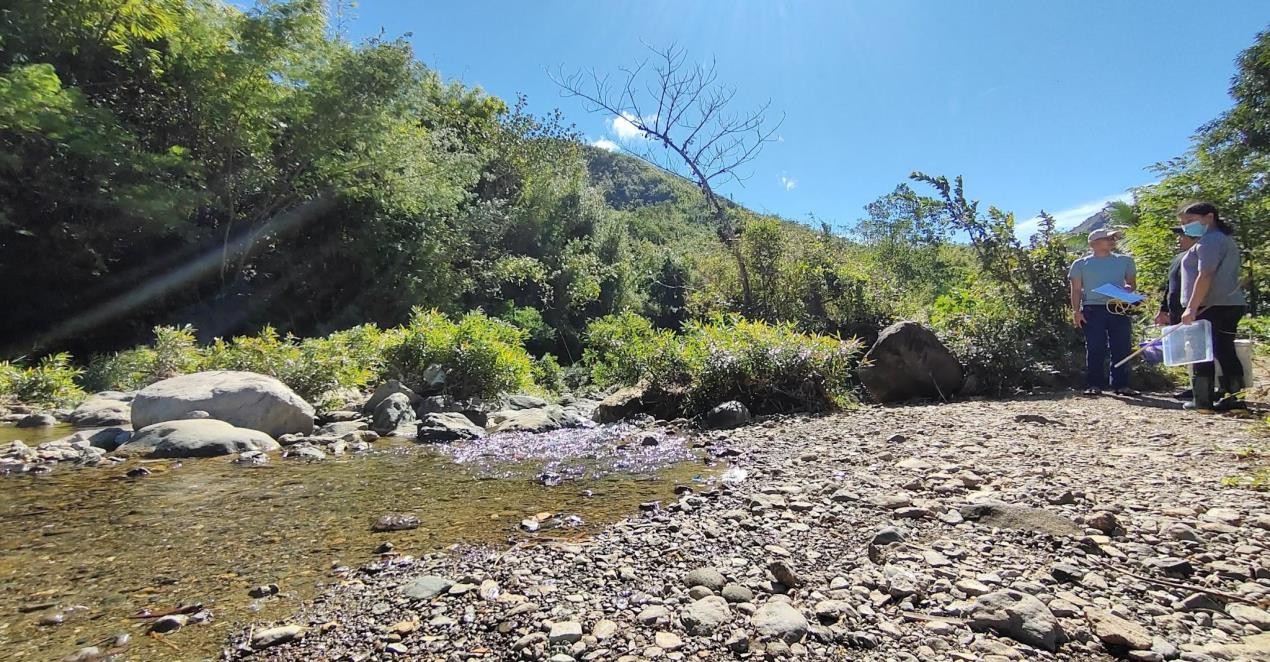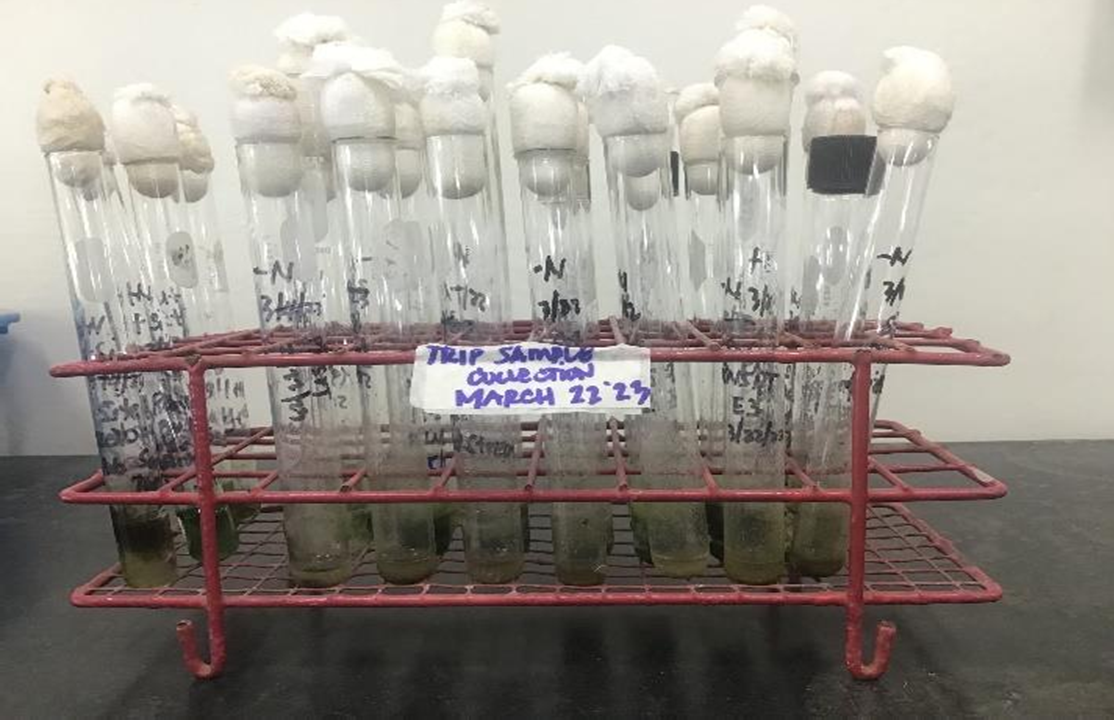As a result of deteriorating water quality and degradation of freshwater ecosystems, fisheries productivity of freshwater bodies in some parts of the country continues to decline.

Marikina River sampling sites. (Image credit: UPLB Project team)
Philippines, as an archipelagic country, has been characterized by its various surface freshwater resources, and rivers play an important role as aquatic ecosystems. Continuous deterioration of present rivers threatens valuable economic products like fish.
A project implemented by the University of the Philippines Los Baños (UPLB) found diatoms as indicators of water quality. Diatoms are types of microalgae that can survive even in contaminated water, thus becoming good indicators of water quality.
This was initiated through the project, “Establishment of Biological Water Quality Index Based on Diatoms for Fishery Production and Environmental Conservation in Batangas and Marikina Rivers, Philippines,” which aims to establish a biological water quality index based on diatoms by correlating their respective population size to different abiotic parameters. It was funded by the Philippine Council for Agriculture, Aquatic and Natural Resources Research and Development of the Department of Science and Technology (DOST-PCAARRD).

Cultured Marikina River diatoms in BG11+N + Silicate medium. (Image credit: UPLB Project team)
During its annual program review, the project team noted that there have already been several indices created to assess water quality using diatoms. However, these diatom indices developed in Europe are only applicable in temperate bodies of water, providing little information on their applicability to water quality assessment in tropical and subtropical regions, like the Philippines.
Developing an index that is suited to the Philippines is a need, and possibly adopted by other tropical countries.
According to the project, diatoms are the most convenient microalgae used as an index of water quality due to their stability in taxonomic character and their known responsiveness to environmental conditions, including climate change.

Pansipit River sampling sites. (Image credit: UPLB Project team)
In its first year of implementation, six sampling trips were conducted during the dry and wet seasons. Dry season sampling was done in Marikina River, and the other three trips were done in Pansipit and Palanas Rivers in Batangas. Other sampling trips were to revisit the Pansipit River during the wet season.
Results of the project’s identification and enumeration of water samples revealed that Gomphonema, Cymbella, Nitzschia, Ulnaria, and Navicula were the most common diatoms found in Marikina River. In Pansipit River, the most common diatoms found during the dry season were Melosira, Biddulphia, Achnanthes, Navicula, Cocconeis, and Aulacoseira, while Coscinodiscus, Cocconeis, and Nitzschia were the most common during the wet season. In Palanas River, Biddulphia, Pinnularia, Coscinodiscus, Cocconeis, Campylodiscus, and Melosira were the most common diatoms during the dry season.

Cultured Pansipit River Diatoms in BG11+N + Silicate medium. (Image credit: UPLB Project team)
The identified diatoms were also assessed for their potential nutritional value as a feasible feed for fishes like ‘tilapia.’ In addition, the diatom index to be developed can be utilized in evaluating water quality, contributing to understanding the country’s water sources.
Since the project is still ongoing, it plans to continue its implementation with its remaining series of identification and analyses, to develop an index of water quality using diatoms tailored to the Philippine condition.
The project hopes to contribute to the scientific knowledge on ecological assessment and aid in improving the water quality of Philippine river systems, as they continue to serve as one of the main sources of food security and livelihood in the country. It also seeks to recommend policies relevant to the sustainability of Marikina River and Batangas Rivers (Pansipit and Palanas) as possible sources of drinking water and/or as fish sanctuaries in the future.

